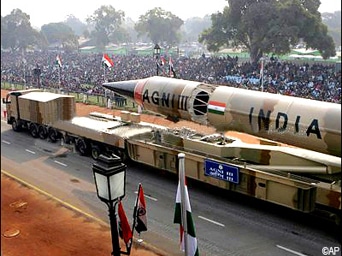Western Media Makes No Effort to Cover Indian Covert Operations
by Asif Haroon Raja Editing… Jim W. Dean
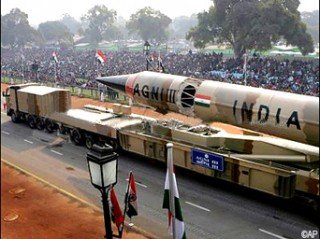
Basing on tangible factors of its armed forces coupled with its nuclear strength, India claims to be the strongest military power in South Asia. America has now started to authenticate its claims.
India fought three wars with Pakistan out of which two ended in a stalemate and one in controversial victory.
In the 1948 war in Kashmir, when the position of Indian forces became precarious owing to stiff resistance put up by ragtag Pakistani forces together with Mujahideen, Nehru beseeched the UN to intervene and affect a ceasefire.
Pakistan agreed to ceasefire only when Nehru gave his pledge that he would hold a plebiscite and allow right of self determination to the Kashmiris.
His pledge was a ploy to save Kashmir but Liaquat Ali Khan believed him and thus lost a chance to reclaim Kashmir.
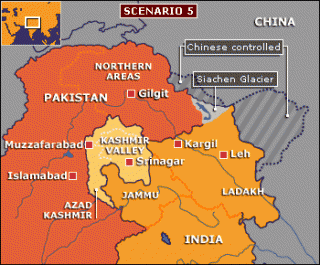
In August 1965, when Pakistani forces launched Operation Grand Slam in Indian Held Kashmir (IHK) and critical city of Akhnur was within their grasping reach, India declared all out war against Pakistan on 6 September.
However, its pompous designs to humble Pakistan were effectively foiled by Pak forces.
When the 17-day war ended inconclusively after India readily agreed to ceasefire, Pakistan forces had achieved superiority of strategic orientation.
They were well poised to deliver the decisive blow and as such had an edge over numerically five times superior Indian military.
In the 1971 war, India used the instrument of psychological war to subvert East Pakistan, which was 1000 miles away from West Pakistan with a sea in between and surrounded by India from three sides.
But for Indian military trained 2,87000 strong Bengali rebels who engaged Pakistani forces in high intensity insurgency for nine months, all out support of former Soviet Union and deleterious role of USA, Indian ten divisions together with 32 BSF battalions and Mukti Bahinis backed by massive artillery, tank, air and naval support could not have defeated the marooned force of 34000 regular troops and 11000 paramilitary forces devoid of air and armor support and cut off from rest of the world.
In order to glamorize its so-called victory, Indian writers have been repeatedly mentioning false figure of 90,000 Pakistani soldiers surrendering to Indian forces.
![india-kashmir-white-mountains-green-valley-05[1]](https://www.veteranstodayarchives.com/wp-content/uploads/2011/11/india-kashmir-white-mountains-green-valley-051-320x215.jpg)
The Indian sponsored LTTE was eventually eliminated by Sri Lankan forces in May 2009. In the two localized conflicts with Pakistan in Rann of Katch in April 1965 and in summer of 1999 in Dras-Kargil area, Pakistani forces had beaten Indian forces.
Comparing the performance of UN missions in disturbed countries, Pakistani units have excelled and have earned the reputation of being the best among all nations in the world while Indian units do not figure out at all.
Performance of Indian security forces in combating insurgencies, separatist movements and freedom movements is also deplorable since they have not been able to smother any in spite of applying brutal force. In IHK, over 700,000 Indian forces are battling with ragtag freedom fighters since 1989.
They have massacred well over 100,000 Kashmiris and have used rape, torture and guile as weapons of war but have still been unable to quell the movement.
India’s lame excuse that the freedom movement was not getting quashed due to Pakistan’s support was also taken care of when Gen Musharraf allowed India to fence the Line of Control and banned all Kashmir focused Jihadi groups.
Indian forces are now firing at unarmed teenagers. With such a poor track record, it is strange that the US is betting on India and preparing it as a counterweight against China.
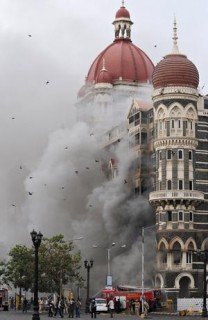
26/11 was the biggest disaster after 9/11 since ten terrorists took the Mumbai city hostage and battled elite forces of Indian Army, coastal guards, paramilitary forces and police for 72 hours.
Nine of the attackers were ultimately killed after Israeli and South African commandos barged in, otherwise the saga could have prolonged. 166 people including the attackers died in the shootout.
Complete chaos and confusion prevailed in the city during the siege and security forces were found running around helter-skelter in utter panic. Instead of battling the terrorists, the media and political leaders trained their guns on Pakistan and held it responsible.
In order to wash away the fear psychosis and to hide their embarrassment, the entire military might was deployed along Pakistan’s border and it started flexing its muscles.
All this was done without having a shred of evidence against Pakistan.
Instead of holding its security forces and intelligence agencies responsible for the debacle, Indian media undertook a frenzied campaign against Pakistan to malign its image and to prepare grounds to get ISI declared as a rogue outfit.
Taking advantage of widespread disorder in Mumbai city, Indian police officer Hemant Karkare was gunned down by RAW agents. He had netted the Hindu terrorist group involved in most terrorist attacks in India and had traced its linkage with Indian Army’s serving and retired officers including Lt Col Purohit.
He had arrested the whole group and the case was under trial in law court. This discovery was just the tip of the ice burg. Many startling revelations would have surfaced had Karkare lived for some mort time.
It was astonishing to note that all the Hindu terrorist groups in India, particularly those espousing Hindutva were patronized by Indian military intelligence, RAW and BJP. Western media is tightlipped over Hindu terrorism and extremism and rogue elements in Indian Army.
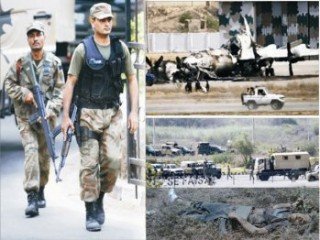
Attacks on GHQ and Mehran Base were executed by handful of terrorists but owing to swift and effective response of the security forces, the situation was brought under complete control within 18-20 hours.
Some were overpowered while others were killed in action.
These attacks did not disturb the routine life of Rawalpindi and Karachi nor caused any undue panic.
Unlike the childish and panicky response of Indian media and its leaders, response of Pakistan leaders and media was dignified.
No finger was raised at India or any other country. Rather, Pakistani media took the ruling regime and armed forces to task and held them accountable for intelligence failure and lack of preparedness.
With regard to 2 May stealth helicopters assault, it was carried out deceptively by an elite force of USA against most wanted man and not against Pakistani target. There was anger but no nervousness in Pakistan. The incident galvanized the nation to confront the American challenge, which till then was considered an ally.
India claiming to be a world power capable of taking on China and Pakistan at a time didn’t pick up courage to take part in war on terror or to spare troops for invasion of Iraq.
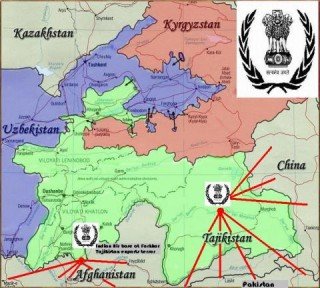
Instead it opted for cowardly covert war against Pakistan and that too using Afghan soil. RAW claiming to be the biggest intelligence agency in the region couldn’t get hold of a single al-Qaeda operative wanted by USA.
On the other hand, Pakistan was instrumental in breaking the back of al-Qaeda by arresting its over 600 leaders.
Indian civil, military and intelligence persons are present in Afghanistan in very large numbers.
But al-Qaeda and Taliban have hardly targeted them, giving strong reason to suspect that there is a secret alliance between them.
The US remains mum.
Pakistan Army and ISI have lost over 3550 at the hands of militants but the two are still accused of their linkage with them.
There are 37 insurgencies raging in different parts of India fighting Indian security forces due to injustices and discriminatory policies of rulers. There are over 100 non-Muslim and Muslim terrorist groups in India. Restive regions provide a fertile ground to ISI to foment anarchic conditions and fragment India.
How is it that the ISI has not contacted any of the anti-state group or added fuel to any of the insurgencies particularly Naxalite or Maoist insurgency which has become an existential threat to India?
Conversely, RAW is involved in Balochistan insurgency, FATA and Swat militancy, Karachi unrest, Balwaristan movement in Gilgit-Baltistan, Seraiki movement in South Punjab, and is linked with nationalist parties in rural Sindh and Khyber Pakhtunkhwa.
It is supporting TTP, Fazlullah group, BLA, BRA, BLF and is associated with militant wing of a political party. Yet it is ISI which is maligned and no finger has ever been raised against RAW.
India is least interested in al-Qaeda or Afghan Taliban and has no interest in curbing terrorism in Afghanistan. It will never ever antagonize China what to talk of going to war with it, but feels elated when it is called a bulwark against China or a world power.
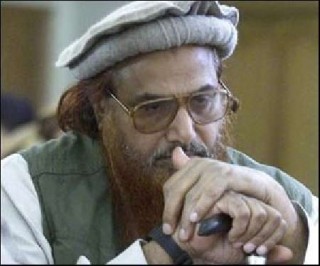
Its sole interest is to destabilize, denuclearize and balkanize Pakistan so as to become an unchallenged super power of South Asia.
It is more concerned with IHK based Lashkar-e-Taiba which it projects as a bigger monster than al-Qaeda.
If India is spending so much money in covert war against Pakistan, why can’t it divert part of it to fight Taliban and al-Qaeda that have become nightmares for USA and NATO, or to alleviate massive poverty and illiteracy in India?
India should be grateful to Pakistan since it is taking the brunt of terrorism for a decade and containing it.
In case the terrorists succeed in gaining an edge over security forces, the natural course of their spill out is India.
Since terrorism is a common threat to both India and Pakistan, it will be foolish on part of India to sink its head in sand like an ostrich and imagine that it will remain safe.
Once terrorism over floods India, in no time it will get converted from India shining to India darkness.
Wisdom and discretion demands India to come out of its fancy world of Mahabharata and become more levelheaded.
About the writer: Asif Haroon is a retired Brig and a freelance defence analyst. Email: asifharoon7751@yahoo.com
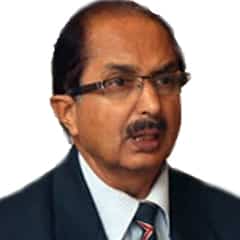
Brig Asif Haroon Raja an Member Board of Advisors Opinion Maker is Staff College and Armed Forces WarCoursequalified, holds MSc war studies degree; a second generation officer, he fought epic battle of Hilli in northwest East Bengal during 1971 war, in which Maj M. Akram received Nishan-e-Haider posthumously.
He served as Directing Staff Command & Staff College, Defence Attaché Egypt and Sudan and Dean of Corps of Military Attaches in Cairo. He commanded the heaviest brigade in Kashmir. He is lingual and speaks English, Pashto and Punjabi fluently.
He is author of books titled ‘Battle of Hilli’, ‘1948, 1965 & 1971 Kashmir Battles and Freedom Struggle’, ‘Muhammad bin Qasim to Gen Musharraf’, Roots of 1971 Tragedy’; has written number of motivational pamphlets. Draft of his next book ‘Tangled Knot of Kashmir’ is ready.
He is a defence analyst and columnist and writes articles on security, defence and political matters for numerous international/national publications.
ATTENTION READERS
We See The World From All Sides and Want YOU To Be Fully InformedIn fact, intentional disinformation is a disgraceful scourge in media today. So to assuage any possible errant incorrect information posted herein, we strongly encourage you to seek corroboration from other non-VT sources before forming an educated opinion.
About VT - Policies & Disclosures - Comment Policy

